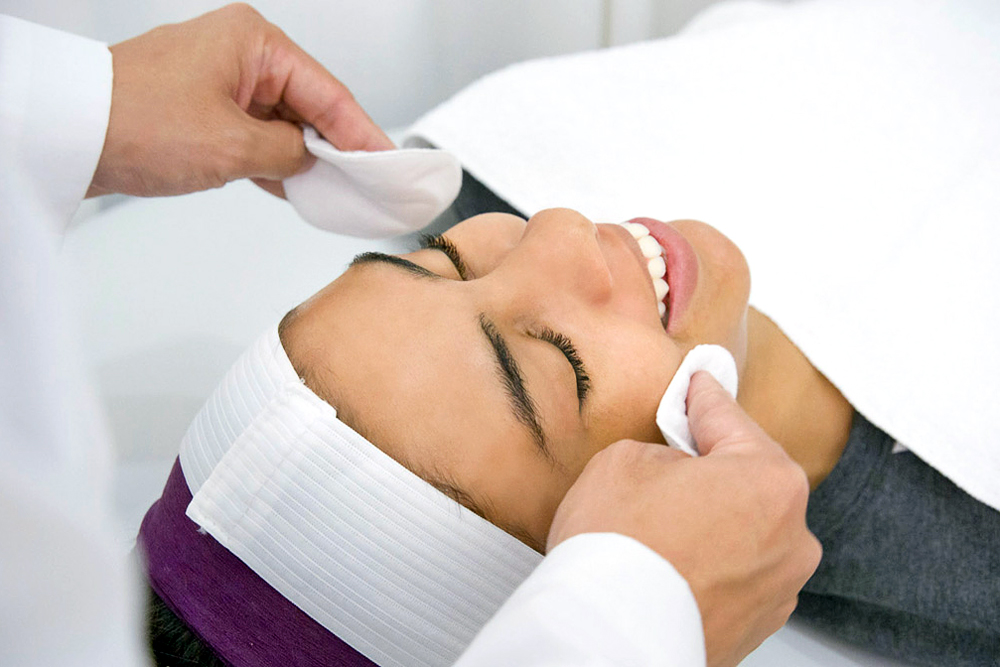Reversing the toll of a long Chicago winter on your skin seems like a project that would take hours, not minutes, and come at a steep cost. But a growing crop of fast facial facilities aims to convince the dry, chapped, and wind-burned otherwise.
Take Skin Laundry, tucked into the back of ULTA Beauty’s Michigan Avenue location (430 N. Michigan Ave.). The most arduous part of the Laser & Light Facial just might be scrolling through and signing the pages of medical forms required on your first visit.
After that, the 15-minute treatment—during which a nurse uses a laser to zap away dirt and an intense, pulsed light to fade scars and pigmentation—passes in a literal flash. Your first one’s free, and after that they’re $65 (less if you spring for a package).
If you have a half-hour and an extra $60, upgrade to the Carbon Peel, which incorporates carbon oil in an effort to deepen the laser’s cleaning and exfoliating powers. Or, head to River North’s MudbuM (357 W. Erie St.) and choose from a smoothie-bar-esque menu of five 30-minute facials. Each $50 treatment has a key ingredient that founder Shama Patel calls the “driving force.” There’s the tightening, toning Mud; Fresh, with brightening kale and lemon; and Breathe, which uses milk to gently cleanse sensitive skin.
For an extra $10, opt for breast milk—yes, breast milk—which adds infection-fighting antibodies to battle acne. (Creeped out? Patel says it’s ethically sourced from individual mothers with clean, healthy diets.) Patel got the idea from mommy blogs and has proved so popular one of her sources has continued pumping for two years.
For the more time-crunched, the Cryo Toning facial at The CryoBar (1205 W. Webster Ave., with a second location opening soon in Bucktown) takes just 10 minutes—and you don’t even have to take off all your makeup. Just relax in a massage chair while a trained technician uses a wand called a Cryo-T Elephant to run a stream of cold nitrogen vapor over your scalp, neck, and face.
The chill stimulates production of the structural protein collagen, reducing the appearance of pores and wrinkles and easing inflammation, redness, and breakouts. That’s according to owner Sara Latham, who discovered cryotherapy when seeking a way to improve her skin without aggravating her rosacea. It’s $40 for first-timers and $65 after, or less if you buy packages.
Besides their speed and moderate costs, these facilities require no downtime. You can squeeze them in on your lunch break or after work without telltale redness, peeling, or bruising.
“I’m all about efficiency and I really just don’t have time to sit down to get an hour-long plus facial,” Patel says. Eliminating extra spa amenities—sorry, no sauna—cuts overhead. “We can take a lot of that out and just focus on good care and good products and good staff, knowledgeable aestheticians, and that’s what reduces the cost.”
Because these spots use so many different techniques, it’s hard to give a blanket assessment of their effectiveness, says Murad Alam, M.D., chief of cutaneous and aesthetic surgery in dermatology at Northwestern University Feinberg School of Medicine.
Many promise to crank up collagen production, which doesn’t surprise him—it’s the skin’s reaction to nearly any microtrauma, even rubbing your face with a dishcloth. What’s more challenging is knowing whether that boost translates into any significant difference in the look and feel of your skin, he says.
His biggest concern is safety, and he advises asking questions about the benefits and risks as well as the training of the practitioners. And if you feel pain, that’s a sign something’s not right. “Do not tough it out,” he says. “If you feel like, ‘Wow, this is really hurting,’ ask them to stop.”
While Patel says many of her clients are new to facials, Latham has customers that combine cryotherapy with in-office treatments like the ones Alam performs—popular options this time of year include lasers to zap brown spots and blood vessels and fillers or Botox to erase minor lines and furrows.
If that describes you, Alam advises explaining your entire routine to both your dermatologist and your esthetician, nurse, or technician. “You can have various things done by various people, but it’s always good to have a plan, and good communication between everybody working on you,” he says.



